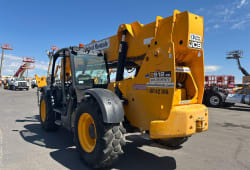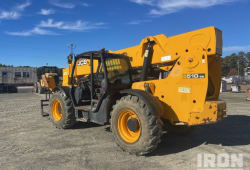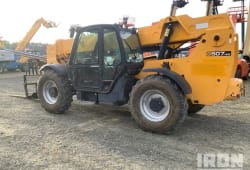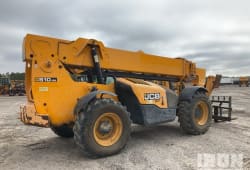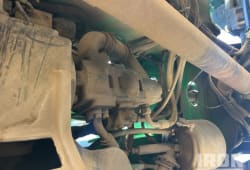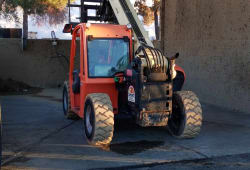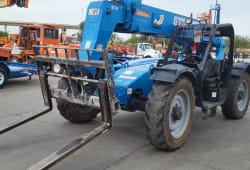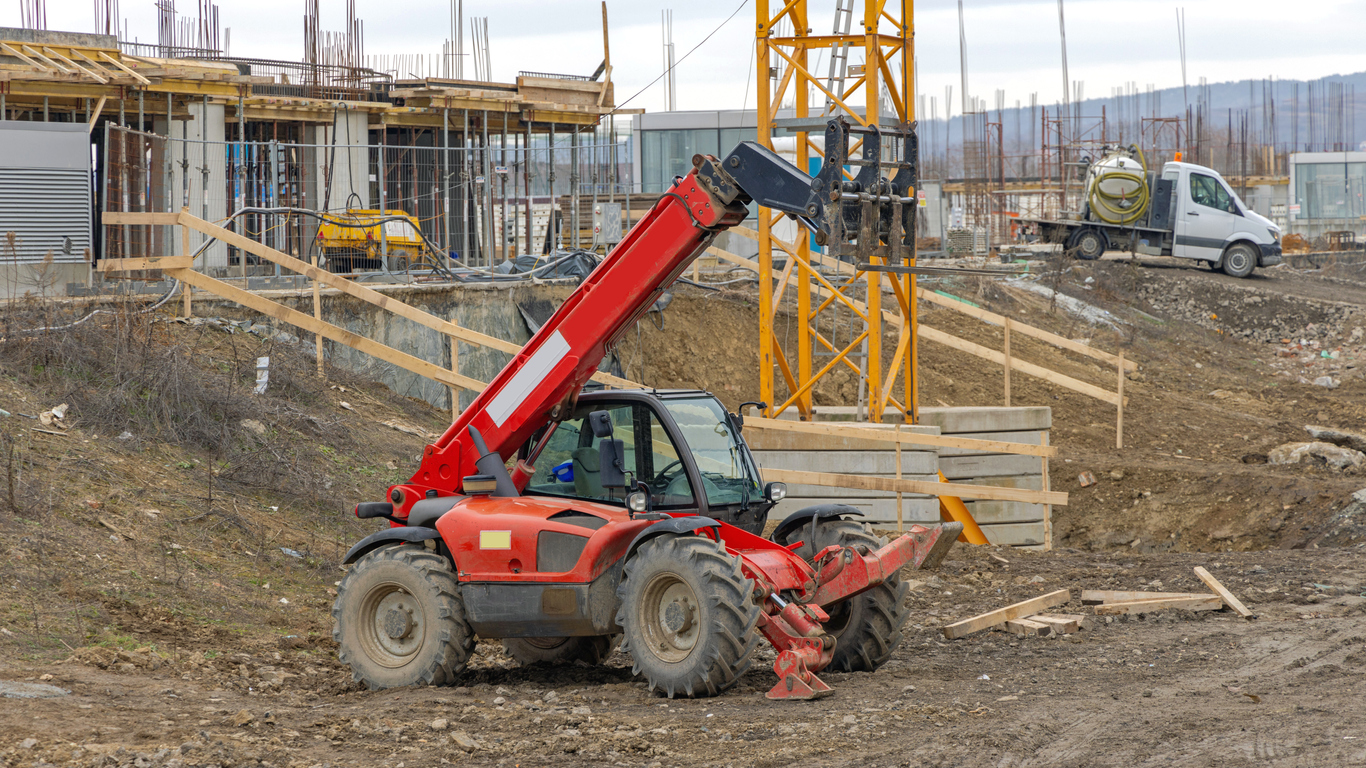Choosing the Right Telehandler for Your Project: A Comprehensive Guide
9 Min read
)
September 4, 2023
Are you embarking on a new project that requires heavy lifting and versatile equipment? Look no further than telehandlers! These powerful machines are your go-to solution for a wide range of construction, agricultural, and industrial tasks. In this comprehensive guide, we'll walk you through everything you need to know about choosing the perfect telehandler for your project. The load chart for a telescopic forklift shows the maximum load capacity of the machine at different boom angles and extensions. From understanding their functionality to navigating the different options available, we've got you covered.
Evaluating Your Project Needs
Before you delve into the world of telehandlers, it's crucial to carefully assess the unique requirements of your project. This entails considering various factors that directly influence the type of telehandler best suited for your needs.
Firstly, you should take into account the load and lift capacity of large equipment that your project demands. Different telehandlers come with varying load capacities, and choosing the right one ensures that it can safely lift and transport the materials or equipment involved.
Another vital consideration is the lifting height required for your project. Depending on the tasks at hand, you'll need a telehandler with an appropriate lifting capability to ensure that materials can be raised to the necessary maximum lift heights from within.
A Guide to Project-specific Choices
:format(webp))
When it comes to telehandlers, the array of available options is extensive, underscoring the importance of comprehending these distinctions to make well-informed choices. Each telehandler variant is designed with specific attributes tailored to different project requirements.
Telehandlers come in a diverse range, offering solutions for various project scales and scopes. For instance, compact telehandler models are designed with the limitations of confined spaces in mind. These agile machines are adept at manoeuvring through tight areas, making them ideal for projects where space is at a premium. On the other end of the spectrum, heavy-duty telehandlers are compact models purpose-built for sizable projects, capable of handling substantial loads and tasks.
Furthermore, a critical consideration in this decision-making process involves the availability of various attachments used. These attachments, such as buckets, forks wheel loaders, and platforms, augment the versatility and functionality of the telehandler. They enable the machine to adapt to a wide range of tasks beyond its primary lifting function. Attachments like buckets are perfect for material handling and moving loose items, while forks are tailored for lifting and transporting palletized loads. Platforms provide an elevated workspace, enhancing the telehandler's utility in scenarios where elevated access is required.
Matching Telehandlers to Your Project Requirements
Achieving peak performance with a telehandler hinges on the meticulous alignment of the machine tipping its specifications with the unique demands of your project. This crucial step entails a thorough assessment of various key factors to ensure a seamless fit between the machine and the task at hand.
At the forefront of this assessment is the consideration of load capacity. It's imperative to select a telehandler with a load capacity that corresponds accurately to the weight of the materials or equipment your project entails. A mismatch in load capacity can result in suboptimal performance, potentially leading to operational inefficiencies and increased costs. Moreover, pushing the high capacity of a telehandler beyond its designed load limit can pose safety risks, jeopardizing both personnel and equipment.
Equally significant is evaluating the maximum lift height and reach of the telehandler. These specifications must harmonize seamlessly with the vertical requirements of your project. A telehandler with inadequate lift height may hinder the completion of tasks that demand elevation, while excessive lift height might be unnecessary and cost-ineffective. By precisely matching the lift and maximum height and reach to your project's needs, you ensure that the telehandler operates at its full potential, streamlining operations and bolstering productivity.
The Art of Telehandler Selection: Picking the Ideal Fit for Your Project
Selecting the ideal telehandler is not just a straightforward decision; it's a skilful blend of technical analysis and practical decision-making. To find the telehandler industry perfect fit for your project, you need to carefully evaluate several crucial factors. These factors include the machine's lifting capacity, reach, and stability. These aspects directly impact how much weight is the telehandler's performance and its ability to handle various tasks efficiently.
Lifting Capacity
The lifting capacity of a telehandler refers to the maximum weight it can safely lift. This parameter is crucial as it determines the types and sizes of loads the telehandler can handle. It's important to consider both the full weight capacities of the materials being lifted and any potential variations in load weight. Choosing a telehandler with an appropriate lifting weight capacity ensures not only the safety of the equipment and operators but also efficient and smooth material handling operations.
Reach
The reach of a telehandler refers to its ability to extend its boom and reach out to specific heights or distances. This factor is essential for projects that involve working at various elevations or accessing hard-to-reach areas. When assessing a telehandler attachment's reach, consider the vertical scope of your project and whether the telehandler's boom angle and extension capabilities align with your needs. By selecting a telehandler with the right reach, you can optimize your work efficiency and minimize the need for repositioning.
Stability
Stability is a critical consideration for telehandler selection, especially when dealing with heavy loads or working on uneven surfaces. A stable telehandler is less prone to tipping over, ensuring the safety of both the operators and the materials being handled. Factors influencing stability include the telehandler's design, weight distribution, and additional stabilizing features. Prioritizing stability ensures that your telehandler can operate reliably and securely across various work environments.
Working Environment Conditions
The working environment plays a significant role in determining the suitable size telehandler for your project. Factors such as terrain and space limitations can significantly impact the telehandler's manoeuvrability and operational effectiveness. For instance, if your project site has rough or uneven terrain, you'll need a telehandler with enhanced stability and off-road capabilities. Similarly, if space is limited, a compact telehandler might be more suitable for efficient navigation.
Artful Combination
The true artistry in telehandler selection lies in harmoniously combining these technical considerations and practical judgments. It's not merely about choosing a high capacity telehandler with impressive specifications; it's about understanding how those specifications align with the unique demands of your project. By skillfully blending lifting capacity, reach, stability, and environmental compatibility, you ensure that the selected telehandler seamlessly integrates into your project's workflow. This integration results in enhanced productivity, reduced downtime, and a more efficient overall construction process.
Optimal Telehandler Choice for Your Project
Knowledge is power when it comes to making informed decisions about your telehandler choice. Research different models, brands, and features to understand what aligns best with your project's needs. Consider aspects such as fuel efficiency, maintenance requirements, and operator comfort. Armed with this information, you can confidently select the optimal telehandler model for your project's long-term success.
Finding the Right Telehandler for the Job
Project success hinges on making the right choices from the start. A telehandler's role in your project is pivotal, and with proper training, finding the right fit ensures seamless operations and efficient outcomes. Whether it's loading materials, maneuvering on rugged terrains, or working on construction sites at significant heights, a well-chosen telehandler sets the stage for project excellence.
Customizing Your Equipment Selection for the Project
Tailoring your telehandler's configuration to your project or job site's specific demands can enhance productivity and safety. Attachments and accessories play a crucial role in adapting the machine to diverse tasks. Whether you need to handle bulk materials, lift loads vertically transport personnel, or work in tight spaces, customizing your telehandler ensures it's equipped to tackle any challenge.
Tailored Telehandler Selection for Your Project
In the realm of telehandlers, one size does not fit all. Each project comes with unique requirements, and your telehandler choice should reflect that. Don't settle for a generic solution. Instead, consider the nuances of your task and select a telehandler that aligns precisely with your project rental company's needs. This tailored approach guarantees optimal performance and efficiency.
Strategizing Your Telehandler Decision for Project Excellence
Strategic thinking goes a long way in optimizing your telehandler decision. Collaborate with experts to identify potential bottlenecks and opportunities within your project. Evaluate the timeline, budget, and specific challenges you might encounter. A well-devised strategy ensures your telehandler not only meets your needs but contributes to project excellence.
Navigating Telehandler Options for Your Project's Triumph
Lifting your project to new heights requires careful consideration of telehandler sizes and options. Each model and brand comes with its unique strengths and capabilities. Explore the wide array of choices, from compact telehandlers with high manoeuvrability to heavy-duty models with impressive lifting capacities. By navigating these options effectively, you position your project for triumphant success.
Conclusion
In conclusion, selecting the right telehandler for your project is a critical decision that directly impacts efficiency total cost of ownership, safety, and overall success. By thoroughly evaluating your project's needs, understanding telehandler options, and tailoring your choice to your job site conditions and unique requirements, you'll ensure seamless operations and optimal outcomes. Keep in mind the diverse factors that influence your decision, and don't hesitate to seek expert advice when necessary. With the information provided in this guide, you're well-equipped to embark on your project journey with confidence and excellence.

Caleb Woods is an experienced content specialist and an editor at Boom & Bucket, blending his journalism background with expertise in the heavy equipment industry. He delivers engaging, informative content to help professionals stay informed and make smarter decisions in the machinery market.
